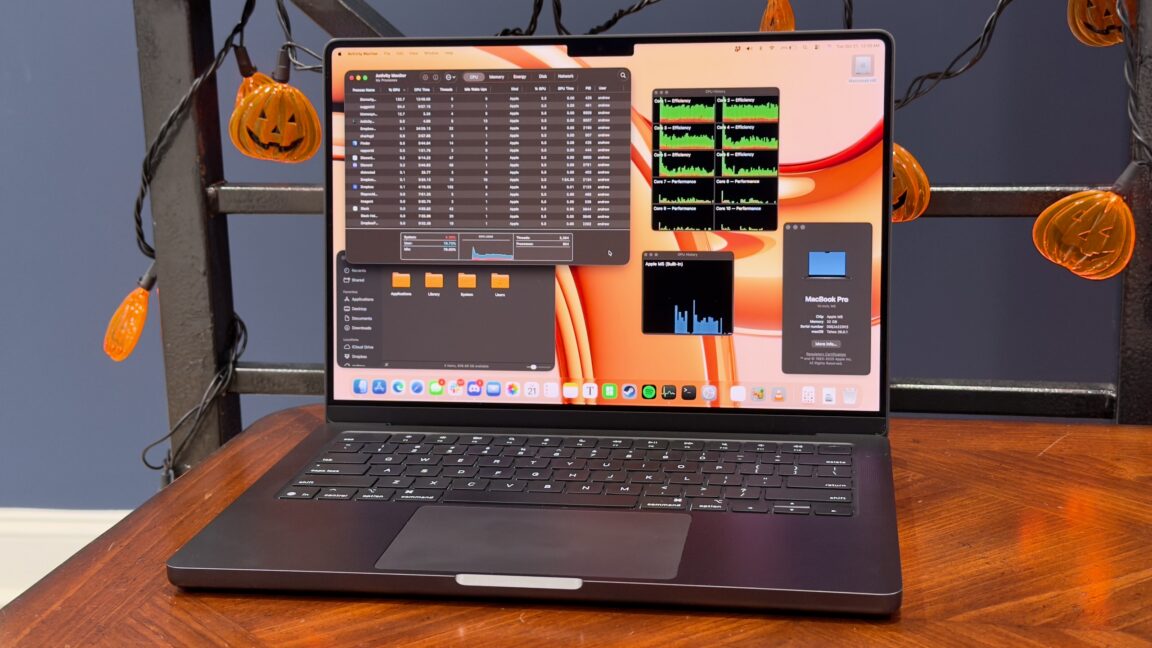But! Before you buy one of the still-M4-based MacBook Airs, our testing of the MacBook Pro’s new M5 chip should give you some idea of whether it’s worth waiting a few months (?) for an Air refresh.
Testing Apple’s M5
We’ve also run some M5 benchmarks as part of our M5 iPad Pro review, but having macOS rather than iPadOS running on top of it does give us a lot more testing flexibility—more benchmarks and a handful of high-end games to run, plus access to the command line for taking a look at power usage and efficiency.
To back up and re-state the chip’s specs for a moment, though, the M5 is constructed out of the same basic parts as the M4: four high-performance CPU cores, six high-efficiency CPU cores (up from four in the M1/M2/M3), 10 GPU cores, and a 16-core Neural Engine for handling some machine-learning and AI workloads.
The M5’s technical improvements are more targeted and subtle than just a boost to clock speeds or core counts. The first is a 27.5 percent increase in memory bandwidth, from the 120 GB/s of the M4 to 153 GB/s (achieved, I’m told, by a combination of faster RAM and the memory fabric that facilitates communication between different areas of the chip. Integrated GPUs are usually bottlenecked by memory bandwidth first and core count second, so memory bandwidth improvements can have a pretty direct, linear impact on graphics performance.
Apple also says it has added a “Neural Accelerator” to each of its GPU cores, separate from the Neural Engine. These will benefit a few specific types of workloads—things like MetalFX graphics upscaling or frame generation that would previously have had to use the Neural Engine can now do that work entirely within the GPU, eliminating a bit of latency and freeing the Neural Engine up to do other things. Apple is also claiming “over 4x peak GPU compute compared to M4,” which Apple says will speed up locally run AI language models and image generation software. That figure is coming mostly from the GPU improvements; according to Geekbench AI, the Neural Engine itself is only around 10 percent faster than the one on the M4.

